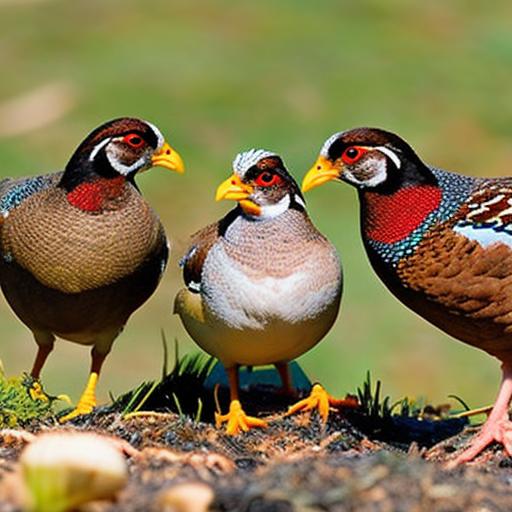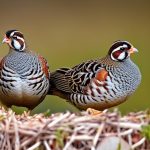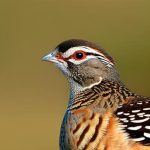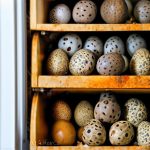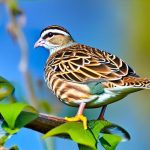Keeping bantams and quail together can be a rewarding experience for poultry enthusiasts. Both bantams and quail are small, easy to care for, and can be kept in relatively small spaces, making them an ideal choice for backyard poultry keepers. However, there are some important considerations to keep in mind when housing these two species together. In this article, we will explore the needs of bantams and quail, how to create a suitable living environment for them, their feeding and nutrition requirements, managing their social dynamics, and health and wellness considerations. By understanding these aspects, you can successfully keep bantams and quail together and provide them with a happy and healthy living environment.
Key Takeaways
- Bantams and quail can be kept together, but it requires careful planning and consideration of their individual needs.
- Bantams and quail have different requirements for space, housing, and diet, so it’s important to understand and accommodate these differences.
- Providing a suitable living environment for bantams and quail involves creating separate areas for nesting, roosting, and dust bathing.
- A balanced diet is crucial for the health and well-being of bantams and quail, with specific nutritional requirements for each species.
- Managing the social dynamics between bantams and quail involves monitoring their interactions and providing enough space and resources to minimize aggression and competition.
Understanding the Needs of Bantams and Quail
Bantams are small chickens that come in a variety of breeds, each with its own unique characteristics and requirements. They require a coop or housing that provides protection from predators, as well as access to fresh air and natural light. Bantams also need a secure outdoor area where they can roam and forage for insects and plants. Additionally, they require a balanced diet that includes a mix of grains, seeds, fruits, and vegetables, as well as access to clean water at all times. On the other hand, quail are small game birds that are known for their ability to lay eggs prolifically. They require a similar setup to bantams in terms of housing and outdoor space, but they have specific needs when it comes to nesting areas and dust baths. Quail also have specific dietary requirements, including a high-protein diet that includes game bird feed, insects, and greens. Understanding the unique needs of both bantams and quail is essential for creating a suitable living environment for them.
Creating a Suitable Living Environment for Bantams and Quail
When it comes to housing bantams and quail together, it’s important to provide separate areas for each species within the same coop or enclosure. This can be achieved by dividing the space with wire mesh or using separate nesting boxes and roosting areas. Bantams and quail have different behaviors and social dynamics, so providing separate spaces allows each species to exhibit their natural behaviors without causing stress or conflict. Additionally, it’s important to provide suitable bedding material for both bantams and quail. Bantams prefer straw or wood shavings for nesting and roosting, while quail require a mix of sand and soil for dust bathing. Providing suitable nesting areas for both species is also crucial for their well-being. Bantams prefer elevated nesting boxes with straw or shavings, while quail prefer ground-level nests with soft bedding material. By understanding the specific housing needs of bantams and quail, you can create a suitable living environment that meets the needs of both species.
Feeding and Nutrition for Bantams and Quail
Feeding bantams and quail requires careful consideration of their specific dietary requirements. Bantams require a balanced diet that includes a mix of grains, seeds, fruits, and vegetables to meet their nutritional needs. They also benefit from access to insects and plants while free-ranging. Additionally, providing access to grit is essential for bantams to aid in digestion. Quail, on the other hand, require a high-protein diet that includes game bird feed, insects, and greens to support their egg-laying capabilities. It’s important to provide access to clean water at all times for both bantams and quail, as well as offering supplemental calcium for laying hens to support strong eggshells. By understanding the specific feeding and nutrition requirements of bantams and quail, you can ensure that both species receive the essential nutrients they need to thrive.
Managing the Social Dynamics Between Bantams and Quail
Bantams and quail have different social dynamics and behaviors that need to be managed when keeping them together. Bantams are social birds that thrive in small flocks, but they can also be territorial and may exhibit aggressive behavior towards other birds, including quail. It’s important to provide enough space within the coop or enclosure to prevent overcrowding and reduce the likelihood of aggression between bantams and quail. Additionally, providing multiple feeding and watering stations can help reduce competition for resources and minimize conflict between the two species. Quail are more skittish and prefer to stay in small groups, so providing hiding spots and cover within the enclosure can help reduce stress and anxiety for the quail. By understanding the social dynamics of both bantams and quail, you can manage their interactions effectively and create a harmonious living environment for both species.
Health and Wellness Considerations for Bantams and Quail
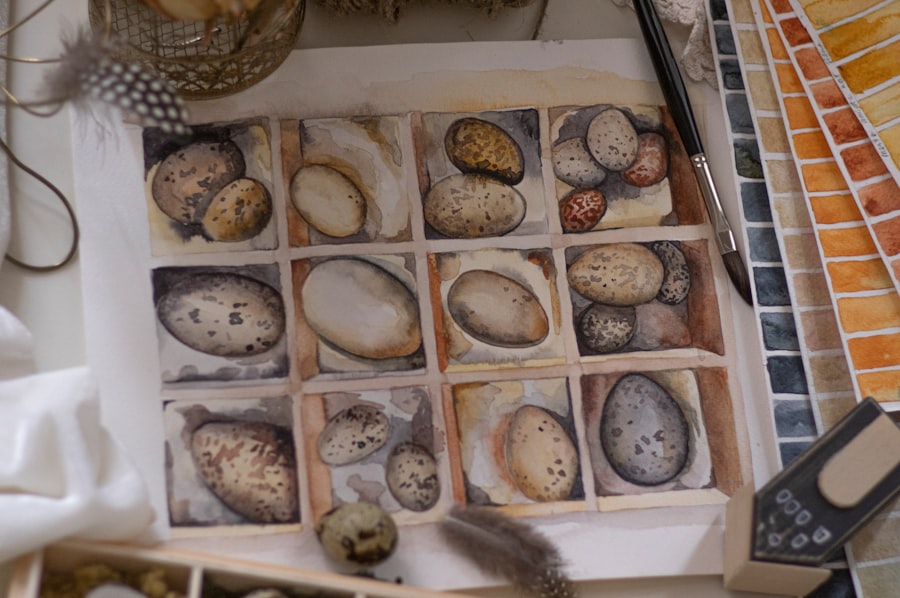
Maintaining the health and wellness of bantams and quail is essential for their overall well-being. Regular health checks are important to monitor for signs of illness or injury in both species. Additionally, providing a clean living environment with regular bedding changes and coop maintenance can help prevent the spread of disease and parasites. It’s also important to provide access to dust baths for both bantams and quail to help keep their feathers clean and free from mites. Providing access to fresh air, natural light, and outdoor space for both species is also important for their mental and physical well-being. Finally, it’s essential to have a plan in place for quarantine and treatment in case of illness or injury to prevent the spread of disease within the flock. By understanding the health and wellness considerations for bantams and quail, you can provide them with the care they need to stay healthy and happy.
Tips for Successfully Keeping Bantams and Quail Together
Keeping bantams and quail together can be a rewarding experience when done thoughtfully and with careful consideration of their specific needs. By understanding the unique requirements of both species, creating a suitable living environment that meets their needs, providing a balanced diet, managing their social dynamics effectively, and maintaining their health and wellness, you can successfully keep bantams and quail together in harmony. It’s important to monitor their interactions regularly, provide enough space within the coop or enclosure, offer multiple feeding and watering stations, and provide hiding spots and cover for the quail to reduce stress and conflict. By following these tips, you can create a happy and healthy living environment for both bantams and quail while enjoying the benefits of keeping these small poultry species together in your backyard.
If you’re considering keeping bantams and quail together, it’s important to understand the unique needs of both species. While bantams are known for their friendly and sociable nature, quail are more independent and prefer to stay in small groups. To learn more about creating a harmonious environment for these two types of poultry, check out Poultry Wizard’s article on how to care for quails. This comprehensive guide provides valuable insights into the behavior and requirements of quail, helping you ensure a successful cohabitation with your bantams.
FAQs
Can bantams and quail be kept together?
Yes, bantams and quail can be kept together in the same coop or aviary as long as certain considerations are taken into account.
What are the considerations for keeping bantams and quail together?
It is important to provide separate areas for the bantams and quail to nest and roost, as well as ensuring that the quail have access to low perches and hiding spots to avoid being bullied by the bantams.
What should the housing setup be like for bantams and quail?
The coop or aviary should have separate nesting boxes for the bantams and quail, as well as low perches and hiding spots for the quail. Additionally, the flooring should be suitable for both species, with options for dust bathing for the quail.
What should the diet be for bantams and quail kept together?
Both bantams and quail have specific dietary needs, so it is important to provide a balanced diet that meets the nutritional requirements of both species. This may include a combination of commercial poultry feed, grains, and fresh greens.
Are there any health concerns when keeping bantams and quail together?
It is important to monitor the health of both the bantams and quail when kept together, as they may be susceptible to different diseases and parasites. Regular health checks and proper hygiene practices can help prevent the spread of illness.
Meet Walter, the feathered-friend fanatic of Florida! Nestled in the sunshine state, Walter struts through life with his feathered companions, clucking his way to happiness. With a coop that’s fancier than a five-star hotel, he’s the Don Juan of the chicken world. When he’s not teaching his hens to do the cha-cha, you’ll find him in a heated debate with his prized rooster, Sir Clucks-a-Lot. Walter’s poultry passion is no yolk; he’s the sunny-side-up guy you never knew you needed in your flock of friends!

